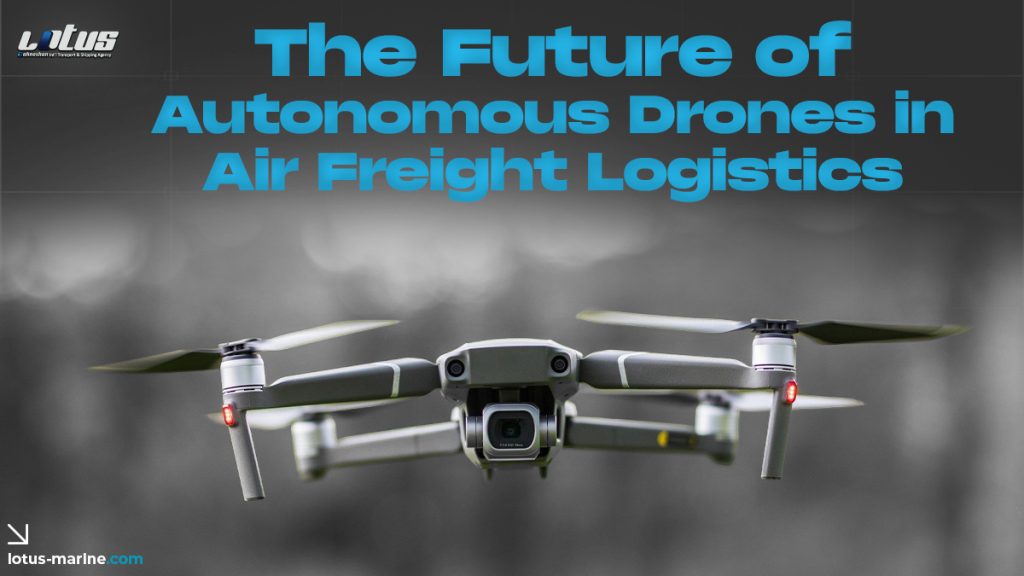Introduction
The rapid evolution of technology is revolutionizing the logistics industry, with autonomous drones at the forefront of this transformation. In air freight logistics, drones offer unmatched potential for speed, efficiency, and cost-effectiveness. As companies strive to meet rising consumer demands, autonomous drones are becoming a pivotal solution in the quest for innovation.
What Are Autonomous Drones?
Autonomous drones are unmanned aerial vehicles (UAVs) that operate without direct human control. Equipped with advanced technologies like AI and GPS, they can carry out tasks such as navigation, delivery, and surveillance with minimal oversight.
Why Autonomous Drones Matter in Air Freight
The growing need for faster and more efficient logistics solutions is driving the adoption of drones in air freight. They can address challenges like last-mile delivery bottlenecks, high operational costs, and environmental sustainability concerns.
Applications of Drones in Logistics
1. Last-Mile Delivery
Drones can bypass traffic and challenging terrains, delivering goods directly to consumers’ doorsteps within minutes.
2. Inventory Management
Drones equipped with RFID scanners and cameras can rapidly audit warehouse inventories, saving time and reducing errors.
3. Emergency Response
In emergencies, drones can deliver essential supplies like medicines and food to remote or disaster-stricken areas.
Technological Advancements Enabling Autonomous Drones
1. Artificial Intelligence
AI allows drones to make real-time decisions, such as rerouting due to weather or obstacles.
2. GPS and Navigation Systems
Advanced GPS ensures accurate and efficient navigation, even in complex environments.
3. Battery Innovations
Longer battery life is expanding the operational range and payload capacity of drones.
Key Benefits of Drones in Air Freight
1. Faster Delivery
Drones can significantly cut down delivery times, especially for urgent shipments.
2. Reduced Costs
With lower fuel and labor requirements, drones offer cost savings for logistics companies.
3. Enhanced Accessibility
Drones can reach areas that are otherwise inaccessible by traditional transportation methods.
Challenges in Integrating Drones into Logistics
1. Regulatory Hurdles
Different countries have varying regulations, creating barriers to widespread adoption.
2. Limited Payload Capacity
Current drone designs can only handle small to medium-sized loads, limiting their utility for large-scale shipments.
3. Security and Privacy Concerns
The risk of data breaches and unauthorized surveillance raises ethical questions about drone usage.
Drone-Friendly Airspaces: A Critical Component
Establishing designated drone-friendly airspaces is essential for safe and efficient drone operations. These zones would minimize the risk of collisions and streamline traffic management.
Successful Case Studies
1. Amazon Prime Air
Amazon has been testing drone deliveries to reduce shipping times for its customers.
2. Zipline’s Medical Supply Deliveries
Zipline uses drones to deliver critical medical supplies to remote areas, showcasing the humanitarian potential of this technology.
Environmental Impacts
Autonomous drones contribute to a greener future by:
- Reducing carbon footprints: Electric-powered drones emit zero greenhouse gases.
- Minimizing traffic congestion: Fewer delivery vehicles on roads reduce urban traffic.
The Role of Governments in Drone Adoption
Governments can accelerate drone adoption by:
- Developing clear and consistent policies.
- Offering subsidies and incentives for companies investing in drone technology.
Future Trends in Drone Technology
- Integration with AI and IoT: Smarter and more efficient drones.
- Swarm technology: Multiple drones working together for large-scale deliveries.
- Enhanced payload capacities: Expanding use cases.
Drones and Artificial Intelligence
AI-powered drones can perform complex tasks such as real-time route optimization, obstacle detection, and predictive maintenance, making them indispensable for modern logistics.
Public Perception and Acceptance
Educating the public about the benefits and safety of drones is vital for overcoming skepticism and building trust.
How Businesses Can Prepare for Drone Integration
- Invest in Technology: Upgrade infrastructure to support drone operations.
- Train Employees: Equip staff with the skills needed to manage drone fleets.
- Collaborate with Regulators: Work with authorities to shape favorable policies.
Conclusion
The future of air freight logistics is undeniably tied to the integration of autonomous drones. With their ability to deliver faster, reduce costs, and minimize environmental impact, drones represent a transformative opportunity for the logistics industry. By addressing challenges and leveraging technological advancements, businesses can unlock the full potential of drone technology.
FAQs
1. What are the primary uses of drones in air freight logistics?
Drones are used for last-mile delivery, inventory management, and emergency response.
2. Are drones environmentally friendly?
Yes, electric drones produce zero emissions, making them a sustainable option for logistics.
3. What are the main challenges of using drones in logistics?
Regulatory hurdles, limited payload capacity, and security concerns are the primary challenges.
4. Can drones replace traditional delivery methods?
While they won’t fully replace trucks and planes, drones will complement existing methods, especially for specific tasks like last-mile delivery.
5. What industries benefit most from drone logistics?
E-commerce, healthcare, and disaster response are among the industries that benefit most from drone technology.







